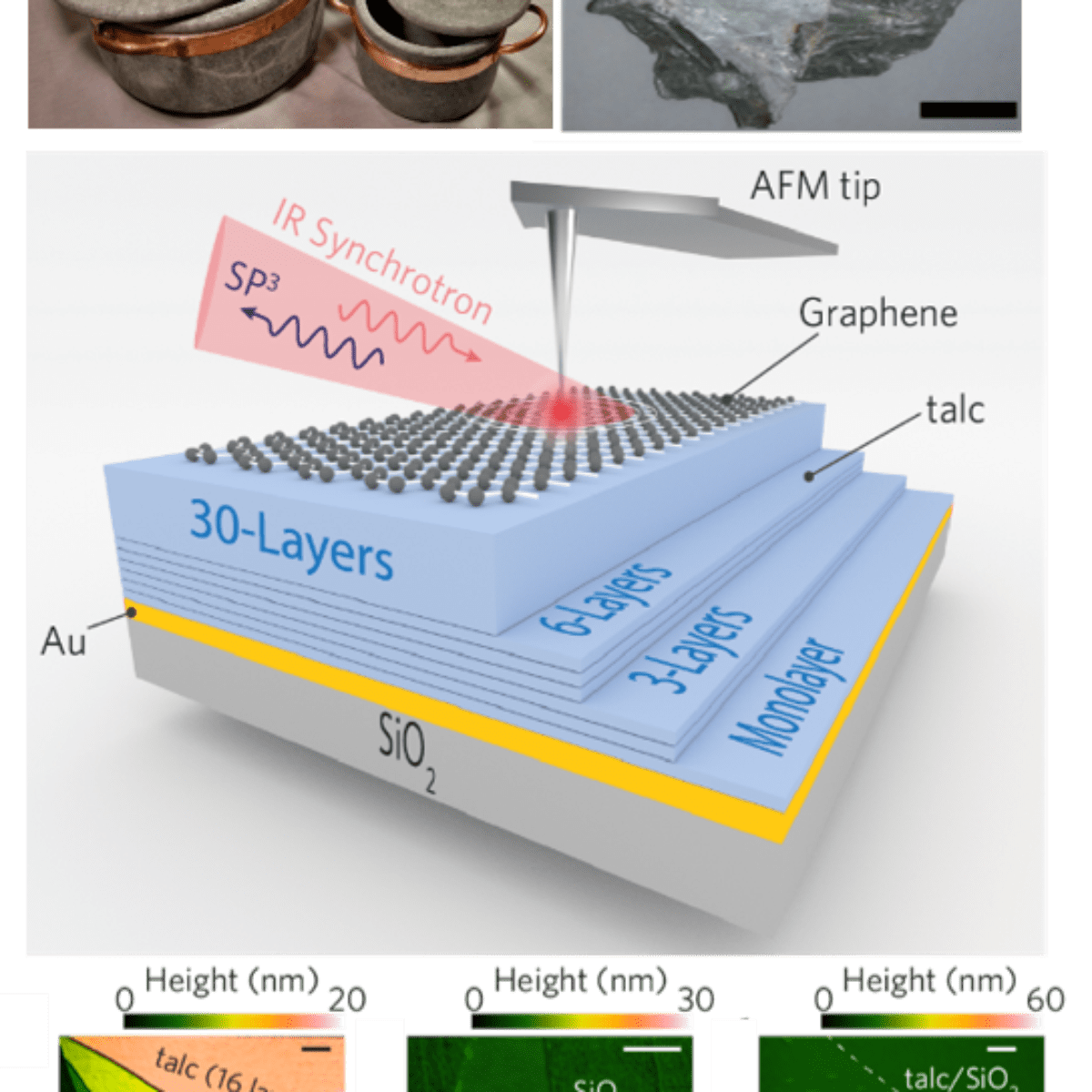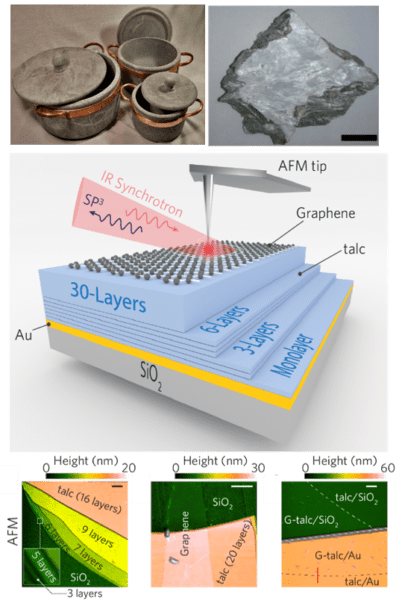
Research shows potential of combining mineral with graphene for the design of new devices
The development of electronic devices in the nanometric scale depends on the search for materials that have appropriate characteristics, and that are also efficient and inexpensive. This is the case of graphene, a material formed by a single layer of carbon atoms obtained from graphite. Graphene is a conductor with excellent optical and electrical properties that can be easily altered by the incidence of electric fields or light.
In addition, several other interesting structural, electronic and optical properties can be obtained by combining graphene with other materials. These new properties arise due to changes in the electronic structure in the interface of different materials when they are brought into contact. In this scenario, the search for new materials and ways of combining them becomes a natural trend.
 Hence, Ingrid D. Barcelos, a researcher at the Brazilian Synchrotron Light Laboratory (LNLS), and collaborators investigated [1] how the properties of graphene are modified when combined with talc $\rm Mg_3 Si_4 O_10 (OH) _2$, or steatite, which is the main mineral that makes up the rock known as soapstone.
Hence, Ingrid D. Barcelos, a researcher at the Brazilian Synchrotron Light Laboratory (LNLS), and collaborators investigated [1] how the properties of graphene are modified when combined with talc $\rm Mg_3 Si_4 O_10 (OH) _2$, or steatite, which is the main mineral that makes up the rock known as soapstone.
Soapstone is a type of rock very common around the world and used by different populations for the making of decorative objects, pots and sculptures. In Brazil, it is particularly known for having been used by the artist Antônio Francisco Lisboa, Aleijadinho, in his works, such as The Twelve Prophets, in the Municipality of Congonhas, Minas Gerais. The largest reserves of this rock in Brazil are also located in Minas Gerais state.
The research has theoretically and experimentally identified different vibration modes generated along and outside the plane of the crystal. Furthermore, it has been observed that changes in the number of layers of talc modifies the intensity and position of the vibration modes in the crystal. That is, the vibrational properties of this natural mineral can be altered in a controlled way through its thickness.
The group also demonstrated that the presence of a single layer of graphene modifies the talc vibrational signature, and this interaction can be modulated through doping, with the incidence of external electric fields.
Therefore, according to the researchers, the combination of graphene and talc will enable the design of new opto-electronic devices at the nanoscale. This is possible not only due to the properties of the combined materials, but also due to the mineral’s abundance, making it a very low-cost material when compared to other materials for the same application, such as hexagonal boron nitride (hBN).
The researchers used the IR1 Infrared Nanospectroscopy Beamline in the LNLS to analyze talc samples of different thicknesses, as well as graphene samples deposited on the surface of the talc, with the incidence of electric fields and light. The group also used the XRD1 X-Ray Diffraction Beamline, also in the LNLS, to analyze the composition and arrangement of talc crystals used in the experiments.
Source: [1] Ingrid D. Barcelos, Alisson R. Cadore, Ananias B. Alencar, Francisco C. B. Maia, Edrian Mania, Rafael F. Oliveira, Carlos B. Bufon, Ângelo Malachias, Raul O. Freitas, Roberto L. Moreira and Hélio Chacham. Infrared fingerprints of natural 2D talc and plasmon-phonon coupling in graphene-talc heterostructures. ACS Photonics, 2018, 5 (5), pp 1912–1918. DOI: 10.1021/acsphotonics.7b01017
Results have potential applications in the production of biomedical images and in the detection of individual molecules
Research investigates use of nanoparticles for advanced oil recovery